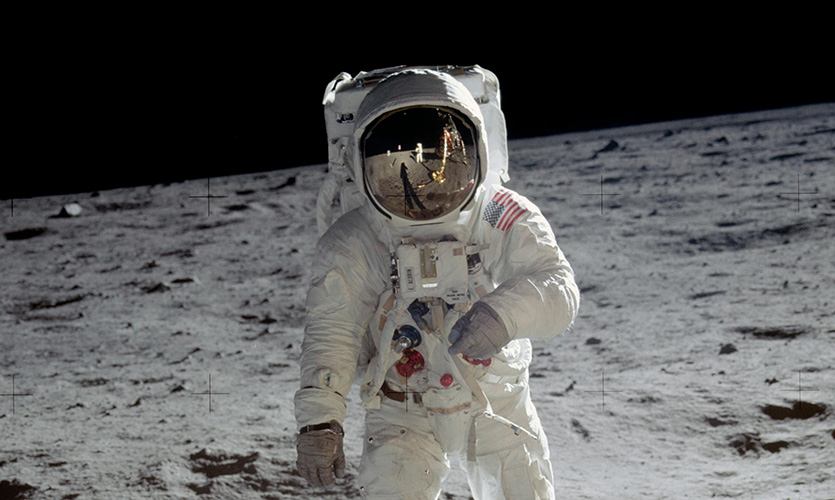The Moon: facts, fascination and the future
The Apollo 11 Moon landing and the Moon itself continue to be a source of inspiration to scientists, engineers, artists and many others. We talk to Professor Andy Newsam, Director of the National Schools' Observatory, about why this is and learn interesting facts about the Moon along the way.
Ever since Andy was little, he’s been asking questions. It was this curiosity that led him to develop an interest in science, particularly astronomy. But his career path was also influenced by a brief meeting with Carl Sagan; a meeting that left a lasting impression on the young Andy.
Later, when Andy was studying at uni, he was taught by scientists from the generation that witnessed Neil Armstrong and Buzz Aldrin walk on the Moon on 20 July, 1969. He remembers his tutors talking about how significant and inspirational this historic event was to them, a sentiment shared by many scientists across the globe.
Watch our interview with Andy, above, as he explains why the Apollo 11 mission and our fascination with the Moon continue to inspire people from all walks of life.
Did you know?
We’ve come a long, long way from believing in the ‘man in the Moon’ or that our nearest neighbour is made entirely of cheese! Here are some things we definitely know about the Moon:
- If you take every other planet in the solar system and put them next to each other they will fit between the Earth and the Moon
- We get perfect solar eclipses, where the Moon is the same size as the Sun, because we happen to live at a time when the Moon is exactly the right distance from us. Go back a few hundred million years and the Moon would have been closer to Earth and would have blocked out the Sun completely
- The phases of the Moon affect many living things. Certain sea-based animals come to the coast at Full Moon, for example, turtles lay their eggs by the light of the Moon. Some plants are also strongly affected by the phases of the Moon. Humans are probably affected as well, but the effects are less noticeable

Moon photographed from the Apollo 11 spacecraft during its journey homeward (NASA)
- Scientists are looking at returning to the Moon with a view to potentially extracting minerals that are difficult to mine here on Earth. The Moon is also a good staging post if you want to go further out into the solar system; the lack of atmosphere makes a journey less expensive than starting from Earth. NASA is planning another mission to land on the Moon by 2024, the lunar surface will act as a stepping stone to Mars. Find out more about Artemis
- The astronauts of Apollo 11 left a lunar laser ranging retroreflector array, a small panel studded with 100 mirrors pointing at Earth. It's the only Apollo science experiment still running. These reflectors determine the Moon's distance with extreme precision. They have revealed that the Moon is moving away from Earth by about an inch and a half per year, the ocean's tides of the Earth are responsible
- We are still learning about the Moon. We don’t know how it was formed, details about its core, mineralogy, how much water there is, etc. Moon rocks, collected from the Moon landings, are still being studied today to help us answer some of these questions
- While Michael Collins orbited the Moon during the Apollo 11 mission, Buzz Aldrin and Neil Armstong went to work on the lunar surface. They deployed scientific instruments, unfurled a sheet of aluminium foil to trap solar-wind particles, took photographs and collected lunar rock and soil, which included three minerals never seen before. The astronauts walked a total distance of about 820 feet; their footprints left on the surface
- American astronauts have planted six US flags on the Moon. But the United States can't claim it; an international law written in 1967 prevents any single nation from owning planets, stars, or any other natural objects in space
The Apollo 11 Moon landing shows that when you put your mind to something, you can achieve your goals. Discover how LJMU can help you achieve your goals by taking a look at our courses.
Explore more
- NASA’s Apollo 11 Mission (includes video and images)
- NASA's Lunar Reconnaissance Orbiter: this spacecraft has repeatedly imaged the Apollo landing sites, including Apollo 11
Find out more about the National Schools' Observatory.
If space fascinates you, why not consider studying astronomy? Discover astronomy and astrophysics courses at LJMU's Astrophysics Research Institute.



